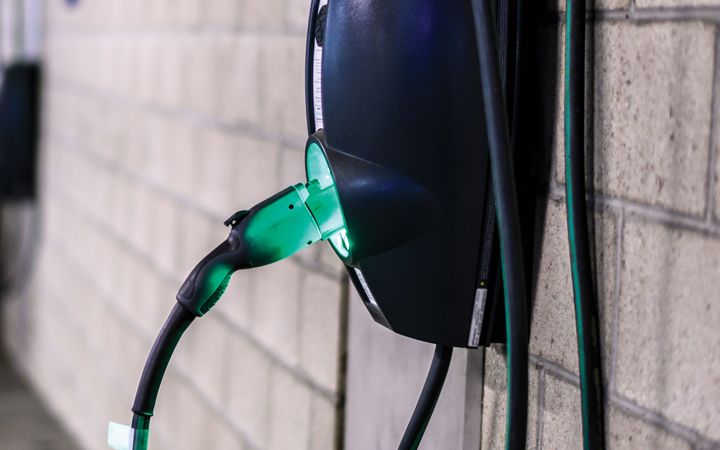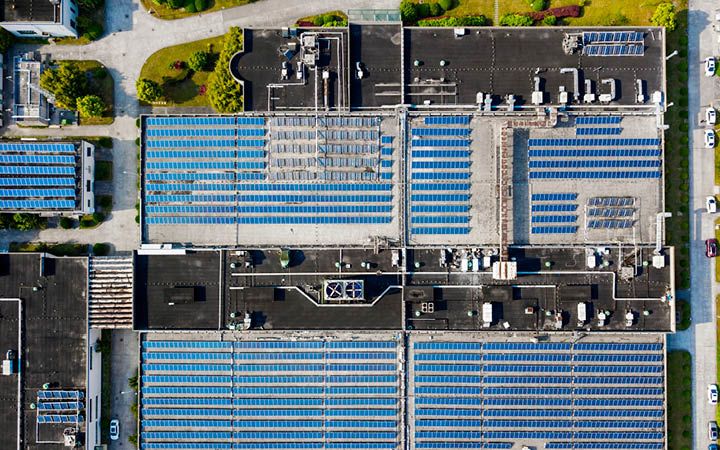Beneficial electrification
States are increasingly setting aggressive electrification goals that are transforming the types of customer programs utilities implement. Discover how these initiatives continue to shape the future of energy, utilities, customers, and the environment.
What is beneficial electrification?
Utilities run beneficial electrification programs that offer their customers financial incentives and technical assistance to replace fossil fuel equipment with electric equipment like electric heat pumps and electric vehicles (EVs).

The term “beneficial” is multifaceted—ensuring environmental stewardship, economic prudence for utility customers, and tangible benefits for participants. As power generation becomes cleaner through the transition to more renewable energy, the benefit of an electrification program grows.
However, electrification requires careful utility planning and implementation. Increasing electrification could, for example, increase peak electric loads and impact the reliable supply of electricity to customers. Significantly increasing electrification also has the potential to increase distribution system costs.
History of beneficial electrification
Beneficial electrification programs date back to the early 1990s when utilities began exploring programs focused on residential and commercial heat pumps, followed by industrial heating and transportation.

In recent years, two key developments have expanded the potential for beneficial electrification programs. First, states have set aggressive electrification goals. Second, the technology for heat pumps, EVs, batteries, and other equipment has improved dramatically.
Benefits
Economically, it offers long-term cost savings for both consumers and businesses. On a societal level, beneficial electrification can improve public health outcomes, reduce energy poverty, and create green jobs.

Benefits and opportunities for utilities that adopt beneficial electrification programs include:
- An increase in revenues and net margins.
- Improved load factors for more efficient operation.
- Reduced net emissions of carbon into the atmosphere.
Benefits and opportunities for beneficial electrification program participants include:
- Reduced emissions of criteria pollutants at sites such as warehouses and bus depots.
- Understanding the total cost of ownership associated with electric fleet vehicles.
- Access to technical assistance and financial incentives to support the transition to electric.
Challenges and the road ahead
Though its benefits are numerous, beneficial electrification adoption comes with distinct challenges. Without proper planning, large-scale electrification can have negative outcomes such as a less reliable electric grid, adverse impacts on gas utilities and their customers, and more.

Strategic planning is paramount for successfully deploying beneficial electrification programs. Utilities must assess their market, engage in data-centric program design, and align initiatives with broader strategic objectives. The design phase should incorporate robust support mechanisms for customers, facilitating the attainment of mutual goals across the spectrum of stakeholders while ensuring smooth and effective implementation.
There is a vigorous debate about the cost, feasibility, and overall efficacy of electrification. The “Electrify Everything” theory argues that renewable energy sources plus energy storage is the clearest path to zero-carbon energy use, and that the increased efficiency offered by electric vehicles and electric heat pumps shifts the economics in favor of electric alternatives.
Beneficial electrification has the potential to significantly offset the decline in load growth experienced by many electric utilities. Full electrification of the U.S. transportation, commercial, and residential sectors would double electricity use by 2050, according to the Environmental and Energy Study Institute (EESI). Our experts found that for a typical utility, beneficial electrification can grow system energy sales by 0.75% per year and put significant downward pressure on electric rates by spreading fixed costs over greater sales.
Further, certain electric technologies create flexible loads for utilities to better manage grid peaks via demand response, load management, managed charging, and vehicle-to-grid programs. Gaining better control over the grid’s peak demand variability addresses another problem—the difficulty of integrating renewable energy because of its variability. Combining peak management with off-peak usage or charging flattens the duck curve, improves system efficiency, and allows the grid to better incorporate additional renewables.
Opportunities
Cities and states across the globe continue to take notice of the effectiveness of electrification programs as they work to meet carbon reduction goals. More than 10,000 cities worldwide have made commitments to reduce carbon emissions. Most major and minor cities in the United States have climate or energy goals.

Opportunities exist for cities and utilities to work together to expand funding for energy efficiency and electrification programs, typically requiring authorization from the state utility regulator. Cities can help by supporting utilities before their regulators when they apply to increase program funding or relax prohibitions on fuel switching.
While municipal utilities don’t need to get regulatory approval, they coordinate closely with relevant government agencies. Cities may also consider leveraging utilities’ considerable experience and infrastructure to deliver carbon reduction programs.
ICF is the largest implementer of utility electrification programs in the United States. These programs take many forms:
- Light,- medium-, and heavy-duty fleet electrification: Many U.S. utilities already have EV programs and/or non-road electrification programs. Municipal fleets, buildings, and operations would qualify for incentives under these programs. Some utilities recover the cost of these programs through rates—some through base rates, others through surcharges or deferral to a regulatory account, and then amortization after a future rate case.
- Residential and commercial buildings: Fossil-fuel combustion attributed to residential and commercial buildings accounts for between 15% to 25% of economy-level emissions, and advancements in efficient electricity-powered technologies, such as air source heat pumps, hold great potential for buildings.
- Agricultural electrification: Utilities that serve a territory with a significant agricultural sector can benefit from an irrigation pumping program, encouraging farm operators to power their irrigation systems with electricity rather than diesel. While net savings to the farmer will vary based on rates, regulations, and fuel prices, common payback times for the farmer range between six months and two years. Additional advantages for farmers include avoiding exposure to volatile diesel prices, significantly reduced maintenance costs and noise pollution, and air-quality compliance benefits (in certain regions).
Planning utility electrification programs
As a first step to success, it’s critical that utilities have the right plan in place for electrification programs. These programs often require integration and collaboration among multiple utility departments, whereas some traditional energy efficiency programs of the past could succeed within individual organizations. Some of the variables determining success live outside a traditional program team’s purview, meaning collaboration across utility functions is needed.

It will be critical for program teams to collaborate across utility departments with system planning organizations to solve key questions about when and where new electric demand can be met reliably. Utility leaders should prioritize more coordination to identify current and likely strained areas on the distribution grid, then charge teams including program teams with finding ways to relieve pressure points collaboratively.
Utilities need to research the existing contractor network and identify needs. Program leaders must think about how they will ensure there are sufficient contractors who are well trained to deliver the work the electrification program envisions.
At the electrification program design phase, it’s critical to set incentives at an appropriate level to move the market so that utility customers—and the contractors required to install electrification infrastructure—want to participate. Program designs also need to include rules that make sure incentives are used as intended.
Program leaders should consider offering customers options to mitigate cost increases, such as weatherization offerings or special rate programs available to those who switch to qualifying heating systems. The story for transportation electrification is similar; customers need help to ensure EV charging doesn’t trigger onerous costs, such as peak demand charges.
Implementing utility electrification programs
Three themes that underly successful approaches to electrification program implementation are integration, education, and innovation.

1. Integration: Large-scale electrification programs are inherently complex. Program stakeholders are both large in number and in make up. It takes many utility functions to implement an electrification program across stakeholder groups.
2. Education and stakeholder engagement: Electrification programs are not traditional demand-side management programs in which the technologies are familiar and the workforce has been installing something like insulation for decades. As such, education and engagement tailored for each stakeholder group should be a program-wide focus during implementation.
3. Innovation: Because large-scale electrification programs are a relatively new breed, they’re still in the relatively early stages of evolution. That means mechanisms for innovation should be built into the process. Teams need to evaluate program data and other feedback regularly to unearth important questions. Behind those questions are answers that will lead to valuable innovations.
Our work